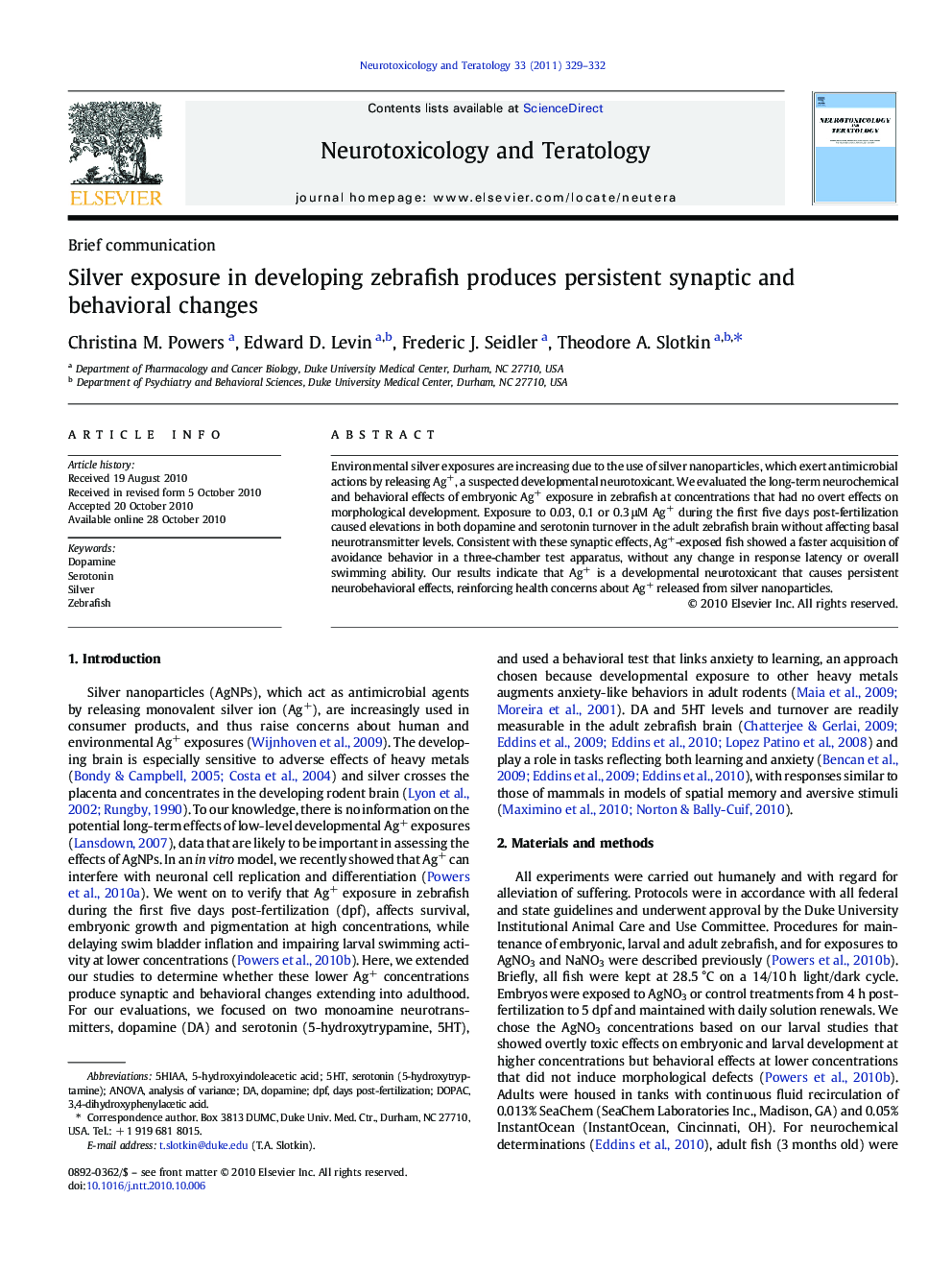| Article ID | Journal | Published Year | Pages | File Type |
|---|---|---|---|---|
| 2591640 | Neurotoxicology and Teratology | 2011 | 4 Pages |
Environmental silver exposures are increasing due to the use of silver nanoparticles, which exert antimicrobial actions by releasing Ag+, a suspected developmental neurotoxicant. We evaluated the long-term neurochemical and behavioral effects of embryonic Ag+ exposure in zebrafish at concentrations that had no overt effects on morphological development. Exposure to 0.03, 0.1 or 0.3 μM Ag+ during the first five days post-fertilization caused elevations in both dopamine and serotonin turnover in the adult zebrafish brain without affecting basal neurotransmitter levels. Consistent with these synaptic effects, Ag+-exposed fish showed a faster acquisition of avoidance behavior in a three-chamber test apparatus, without any change in response latency or overall swimming ability. Our results indicate that Ag+ is a developmental neurotoxicant that causes persistent neurobehavioral effects, reinforcing health concerns about Ag+ released from silver nanoparticles.
